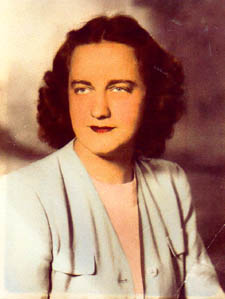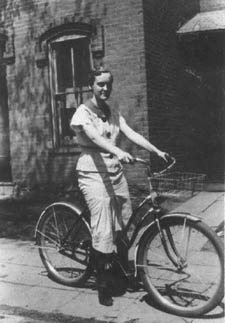| Article by Ms. Gertrude (Siebenaler) Roepke with photos contributed by Ms. Jackie Colby, Ind. School District No. 720 | |
| Photos and information from Ms. Marian Caron (nee Heinen) |
New Deal/WPA Art in Shakopee, Minnesota
It is obvious that the Shakopee High School Library mural by Harmon Arndt is a source of present-day community pride and affection, as evidenced by the number of contributions submitted about this WPA mural. Shakopee, MN stands as an example of how we need to preserve and appreciate this art today.
| Article by Ms. Gertrude (Siebenaler) Roepke with photos contributed by Ms. Jackie Colby, Ind. School District No. 720 | |
| Photos and information from Ms. Marian Caron (nee Heinen) |
| "A Mural Tells the Story
of Shakopee from 1842 to 1940" by Ms. Gertrude (Siebenaler) Roepke with photos contributed by Ms. Jackie Colby, Ind. School District No. 720 |
![]()
| In 1938, Mr. John Metcalf, Superintendent of the Shakopee
Public School, contacted the director of the Federal Art Project in an
attempt to have a W.P.A. artist do a mural for the school library depicting
the history of Shakopee.
Mr. Harmon Arndt, a graduate of the Minneapolis School of Art, was employed to do the work. He met with several of the town's leading citizens, the school board, high school students and Mr. Metcalf. After many meetings to discuss both the type of art work and the subjects and people to be portrayed in the mural, the work began. Three other artists assisted Mr. Arndt who supervised the work. The following is a brief description of the mural: |
||
|
|
||
| The first panel depicts Reverend Samuel Pond teaching
a group of Sioux Indians the Christian word for God and the arts of white
culture and civilization. He and his brother, Gideon, came to Minnesota
as missionaries from Connecticut in 1834, and in the fall of 1847, Samuel
Pond came to the village of Teen-tah-o-ton-wa, which means "Village
on the Prairie," now Shakopee. |
||
|
Also in the first panel, the first steamboat to churn
the muddy waters of the Minnesota River in 1842 bears a party of pleasure
seekers to the Prairie Village (Shakopee).
|
||
|
|
||
| The second panel represents the laying out of the
town site. In the background is the 1844 tamarack log house of the first
settler and Indian trader, Oliver Faribault. Two prominent early settlers
are also represented in this panel: |
||
|
|
||
| Thomas A. Holmes, the father of Shakopee, holds a
scroll which is a plan of the future town; and David L. Fuller looks through
his surveyor's transit. In the spring of 1851, Holmes took a canoe journey
up the Minnesota River, stopping at a hollow near the old village of Teen-tah-o-ton-wa,
where he cooked a meal. Here he built a log trading house on the river
bank. This was the first building in the original town site of Shakopee.
|
||
|
|
||
| The third panel shows the coming of the pioneers in
their covered wagons. In the background are the tepees of the Indians,
the original settlers of this territory. The white population in 1852 consisted
of about 20 families; the Indians numbered about 800.
|
||
|
|
||
| The fourth panel pictures the buildings of early Shakopee.
The grey building to the left is the Methodist Episcopal Church, erected
in 1867. In the background the red building is the City Hall and Fire Department,
erected in 1883.
The brown building is the Union School located between Holmes and Lewis Streets on the south side of Fifth Avenue, which opened on January 4, 1882. In 1908 the name Union was changed to Independent School District No. 1, and in 1957 District No. 1 was changed to District No. 720 and remains that today. Farther along the panel is a 1908 dock scene of the wharf on the Minnesota River. The boats would dock at the shore or the levee and throw out a gang plank. A swinging bridge was built and the bridge swung around on its center pier.
|
||
|
|
||
| The fifth panel shows a Shakopee soldier leaving for
the Civil War. This panel also shows the first railroad train puffing into
Shakopee on November 11, 1865. Shortly after, a combination engine and
passenger car named "The Shakopee" made regular trips between
Shakopee and Mendota.
|
||
|
|
||
| The firemen in this panel are shown fighting Shakopee's
first great fire which occurred in 1872, destroying the frame railroad
shops of the St. Paul and Sioux City Railroad along with all the equipment
and five locomotives.
|
||
|
|
||
| H. H. Strunk and Sons Drug Store and John Berens'
Grocery Store are represented in the sixth panel. White-bearded H. H. Strunk
is standing at the left of the panel. Also in this same panel, seated in
one of the earlier cars of the period, are Dr. and Mrs. H. W. Reiter. Dr.
H. O. Smith, standing beside the car, is accepting one of the first telephones
from Dr. H. W. Reiter. Dr. H. P. Fischer, wearing a brown tie, is standing
on the other side of the car. John Berens is shown in the white apron.
His son, Arthur, is carrying groceries.
|
||
|
|
||
| The seventh panel represent the 1909 Street Fair at
which James J. Hill delivered an address to one of the largest gatherings
Shakopee had ever entertained.
The personalities in the panel of the Street Fair follow from left to right: Mr. Theodore Jaspers (the man with a hand in his pocket, a blacksmith by trade); Mrs. William F. Duffy (woman in the blue dress, active in women's organizations such as Book Lovers' Club and League of Women Voters); Mrs. Leo Siebenaler (woman in brown dress) representing Motherhood holds the hand of her daughter, Martha, mother of 16 children; Mr. Henry Hinds (man in gold suit, brown tie, with full beard, attorney and former owner of the Argus Tribune, worked hard to get a school built and realized his dream when the Union School opened in 1882); Mr. Horace B. Strait (profile, man with full brown beard and navy blue suit, bank president and Mayor at one time); Mr. David L. How (man with glasses and white beard, organized the bank of Shakopee in 1865); Mr. Theodore Weiland (man with a full beard and blue suit, former bank president and chairman of the school board); Major McGrade (tall man in blue uniform, father of Mrs. Duffy); Mr. H.C. Schroeder (man with mustache and gold suit, former Mayor of Shakopee and owner of Schroeder Brick Yards); |
||
|
|
||
| Mr. Jacob Ries (Man with the newspaper in his hand,
founder of Rock Spring Bottling Works); Rev. Dean Mathias Savs (clean shaven,
pastor of St. Mark's Catholic Church); Julius A. Coller II (little
boy with ice cream cone, and now a prominent attorney in Shakopee); Julius
A. Coller I (clean shaven man talking to Mr. Hill, was former City Attorney
and bank president, played an important role in getting the Women's Reformatory
located in Shakopee); Mrs. Elizabeth Ries (woman in green dress, was Mayor
and postmistress of Shakopee at one time - daughter of Jacob Ries); Colonel
G.L. Nye (white bearded man in gold suit, also worked to get the Women's
Reformatory located in Shakopee and headed foundry); Mr. James J. Hill
(standing on the steps, full white beard, railroad builder and financier);
Mr. H.J. Peck (man in gold suit and white beard, attorney); Mr. John P.
Ring (sitting on the porch, brown suit, mustache, operated cafe, was former
Mayor of Shakopee); and Mr. Eli Southworth shaking hands, sitting on the
porch (the other man is just a figure) an attorney. In the background is
the Davy Building.
|
||
|
|
||
| The eighth panel represents modern Shakopee in 1938-39.
In the background are the water tower, Rock Spring Bottling Works, St.
Mark's Church, the foundry, and Rahr Malting Plant. The new baseball stadium
is also shown. The children to the left of the panel are students of the
Shakopee Public Schools: Mary Ellen Metcalf wears an orange sweater; Charles
Bowdish has red hair and wears a green shirt; Edward Pond wears a blue
shirt and is the great grandson of Gideon Pond; Joan Garvey holds a rose;
and Dennis Dahlgren holds a softball. |
||
|
|
||
| Standing by the tree in uniform is Arthur Lemmer,
who was killed in World War I. The three men standing by the car are from
left to right: Mr. Edward J. Sweeney, Superintendent of the Shakopee Public
Schools from 1923-36; Mr. Donald Childs, Scott County Engineer and former
school board member; and Mr. Ed Huber, cashier of the First National Bank
and former school board member. |
||
|
|
||
| The girls in band uniforms are Dorothy Schroeder,
carrying a clarinet and Carol Schumacher. Marion Heinen is the girl in
the blue sweater on the bicycle. She is talking to Warren Stemmer, who
is wearing a baseball uniform. Behind them is Rev. H.W. Schroeder, Dorothy's
father and pastor of St. John's Lutheran Church. Standing next to him is
John Metcalf, Superintendent of Schools (father of Mary Ellen), who is
carrying a briefcase. The graduates are Ruth Huber, daughter of Ed Huber,
and Joseph Schaefer. Behind them is Father McRaith, pastor of St. Mary's
Catholic Church. Joseph Strunk, a druggist, is wearing a brown suit and
has his head turned to the side. He is a grandson of H.H. Strunk. Paul
Ries is wearing a white suit. He is a grandson of Jacob Ries. John Cavanaugh,
Mayor of Shakopee at the time, has his back to us. John Kline is taking
a picture of the graduates.
Classes of 1938, 1939 and 1940 donated funds to pay for the mural project. (A major source of information concerning the mural is the book by Julius A. Coller II entitled The Shakopee Story.)
Gertrude Siebenaler Roepke whose mother is Mrs. Leo Siebenaler, mother of 16 children, representing motherhood in the 1909 Street Fair mural. |
| The following photos and information were contributed by Ms. Marian Caron (nee Heinen): |
![]()
|
Shakopee High School Library |
|
|
|
|
|
|
 |
One of the former local residents |
 |
© 2005 Nancy
Lorance
All Rights Reserved